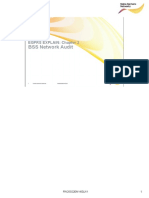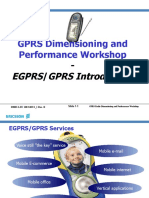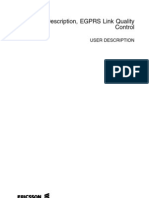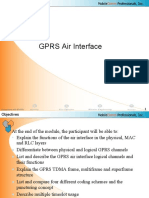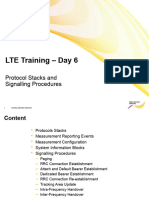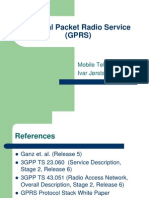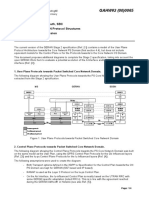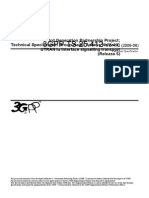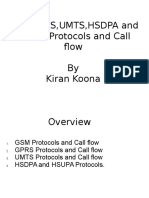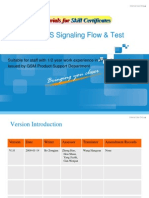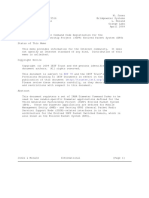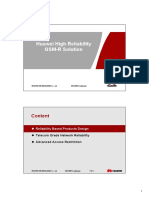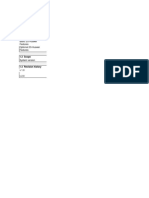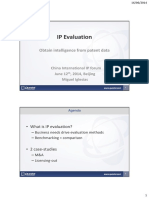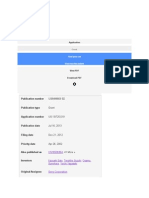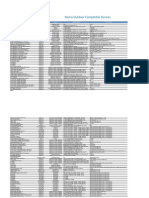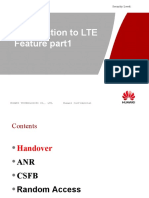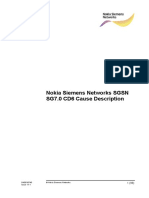3GPP TSG GERAN Adhoc #2
Munich, Germany
9th 13th October, 2000
Tdoc GERAN Adhoc 100/00
Agenda item 6.1.5
Source: Ericsson
Changes to stage 2 descriptions: RLC/MAC PDU formats
1.
Introduction
It has been agreed to include a section about RLC/MAC PDU formats in the stage 2
description [1]. This document proposes some changes to that text and to include it in the
Stage 2 description [1].
2.
Proposed changes to stage 2 description
6.6
6.7
RLC/MAC PDU formats for different protocol modes
6.7.1
Acknowledged RLC mode
6.7.1.1 Shared MAC mode
In shared MAC mode one or more radio bearers of one or more mobile stations can be
multiplexed to the same physical subchannel.
The RLC/MAC header is already defined in 04.60. Which RLC/MAC headers and channel
coding schemes of GPRS/EGPRS to be supported is FFS.
The RLC/MAC header is already defined in 04.60 and depicted in Figure 1 to Figure 4 for
downlink and in Figure 5 to Figure 8 for uplink. EGPRS coding schemes (MCS-1, , MCS9) and GPRS coding schemes CS-1, ,CS-4 are used (the exact use of some fields in the
EGPRS header, such as the current RRBP bits, may change).
Bit
8
7
Payload Type
PR
5
RRBP
4
S/P
TFI
BSN
Length indicator
.
.
.
Length indicator
2
USF
FBI
E
E
Figure 1: Downlink RLC data block header for CS-1, CS-2, CS-3 and CS-4.
Bit
8
7
6
5
4
TFI
RRBP
ES/P
BSN1
PR
BSN1
BSN2
CPS
2
USF
TFI
BSN1
BSN2
Figure 2: Downlink RLC data block header for MCS-7, MCS-8 and MCS-9
�3GPP TSG GERAN Adhoc #2
Munich, Germany
9th 13th October, 2000
Tdoc GERAN Adhoc 100/00
Agenda item 6.1.5
Bit
8
7
6
5
4
TFI
RRBP
ES/P
BSN1
PR
BSN1
2
USF
TFI
CPS
BSN1
Figure 3: Downlink RLC data block header for MCS-5 and MCS-6
Bit
8
7
6
5
4
3
2
TFI
RRBP
ES/P
USF
BSN1
PR
TFI
BSN1
SPB
CPS
BSN1
Figure 4: Downlink RLC data block header for MCS-1, MCS-2, MCS-3 and MCS-4
8
7
Payload Type
spare
Bit
5
4
Countdown Value
TFI
BSN
Length indicator
.
.
.
Length indicator
6
2
SI
1
R
TI
E
E
TLLI
Figure 5: Uplink RLC data block header for CS-1, CS-2, CS-3 and CS-4.
7
TFI
BSN2
Spare
Bit
5
4
3
Countdown Value
BSN1
BSN1
BSN2
RSB
CPS
Spare
6
2
SI
TFI
1
R
Figure 6: Uplink RLC data block header for MCS-7, MCS-8 and MCS-9
7
TFI
CPS
Bit
5
4
3
Countdown Value
BSN1
BSN1
Spare
Spare
6
2
SI
TFI
1
R
CPS
Figure 7: Uplink RLC data block header for MCS-5 and MCS-6
�3GPP TSG GERAN Adhoc #2
Munich, Germany
9th 13th October, 2000
8
Tdoc GERAN Adhoc 100/00
Agenda item 6.1.5
Bit
6
5
4
Countdown Value
BSN1
7
TFI
CPS
Spare
RSB
BSN1
SPB
2
SI
TFI
1
R
CPS
Figure 8: Uplink RLC data block header for MCS-1, MCS-2, MCS-3 and MCS-4
6.7.1.2 Dedicated MAC mode
On dedicated channels, Operational Scenario 2 (OS 2), in which for example one voice RAB
and one best effort RAB of one mobile station are mapped onto one physical subchannel,
can be obtained by either layer 1 or MAC multiplexing (or a combination of both).
The current working assumption is to use the RLC/MAC protocol of 04.60 as a basis. The
channel coding for this protocol mode combination is for further study. Potential channel
coding schemes to be used are GPRS/EGPRS and CSD/ECSD coding schemes. To avoid
cumbersome re-design of the GPRS/EGPRS channel codes RLC/MAC header and coding
schemes (CS-1, ,CS-4 and MCS-1, , MCS-9) as defined in 6.7.1.1 are used without any
modifications.
6.7.2
Unacknowledged RLC mode
6.7.2.1 Shared MAC mode
To preserve compatibility between GERAN R99 and GERAN R00 this protocol mode
combination is evolved from what areis defined in R99.
The RLC/MAC header is already defined in 04.60. Which RLC/MAC headers and channel
coding schemes of GPRS/EGPRS to be supported is FFS. To avoid cumbersome re-design
of the GPRS/EGPRS channel codes RLC/MAC header and coding schemes (CS-1, ,CS-4
and MCS-1, , MCS-9) as defined in 6.7.1.1 are used without any modifications.
6.7.2.2 Dedicated MAC mode using PDTCH.
The current working assumption is to use the RLC/MAC protocol of 04.60 as a basis. The
channel coding for this protocol mode combination is for further study. Potential channel
coding schemes to be used are GPRS/EGPRS and CSD/ECSD coding schemes. To avoid
cumbersome re-design of the GPRS/EGPRS channel codes RLC/MAC header and coding
schemes (CS-1, ,CS-4 and MCS-1, , MCS-9) as defined in 6.7.1.1 are used without any
modifications.
6.7.2.3 Dedicated MAC mode using TCH
GERAN R00 will provide a dedicated unacknowledged radio bearer towards the Iu-ps
interface. This bearer could be used by services having a fairly constant bit rate, e.g.
streaming.
The RLC header defined below is concatenated with the data part of the payload and fitted
into the radio block, the payload bit stream can if necessary be truncated to fit both data and
header into the block to be encoded.
The purpose of not reusing the RLC/MAC-header in EGPRS is to avoid protocol-overhead
since the EGPRS-header offers several fields that are redundant in unacknowledged
operation. Thus, the reduced RLC header only consists of the following fields:
Block Sequence Number (BSN),
Length Indicator (LI),
Extension bit (E), and
Block Check Sequence (BCS 8) (a 16 bit BCS for the payload is optional)
�3GPP TSG GERAN Adhoc #2
Munich, Germany
9th 13th October, 2000
Tdoc GERAN Adhoc 100/00
Agenda item 6.1.5
The RLC-PDU header is assembled as depicted in Figure 1.
Bit
5
4
BSN
LI
LI
BCS 8
1
E
E
Figure 9: Uplink/Downlink RLC data block header for dedicated MAC mode on TCH
6.7.3
Transparent RLC mode
6.7.3.1 Dedicated MAC mode
The transparent mode is used for example to transmit voice in GERAN. The different channel
coding schemes used for voice in GSM are used. New coding schemes for 8-PSK quarter
rate, half rate and possibly full rate speech are also required. Other coding schemes like e.g.
CSD/ECSD is FFS.
Since RLC is used in transparent mode and MAC in dedicated mode, no RLC/MAC header
has to be added.
Refrences
[1]
43.051, GERAN Overall Description, Stage 2
